“We’re not trying to be someone we’re not. It’s talking to our community that has been with us for many years, but also welcoming newcomers to the brand," says Ganni's creative director Ditte Reffstrup
The Ganni girl has been Scandi fashion’s most successful export in recent years: you will have seen the Peter Pan collared shirts, the buckled ballerina flats, and the checked dress that nearly everyone in the Vogue office owned at one point in time. Now though, the cult Danish brand is embarking on its new chapter in Paris, after skipping the past two seasons of Copenhagen Fashion Week.
“For some time, we’ve been thinking of what’s next for Ganni,” creative director Ditte Reffstrup tells Vogue, a day before the brand’s Paris debut. “We’re becoming more and more of a global brand – it felt like we needed a change. Paris is maybe every designer’s biggest dream; it’s still the mother of fashion. It makes sense.”
Of course, leaving Copenhagen – where Ganni was the biggest name on the line-up – to show off-schedule in Paris, in between Dior and Saint Laurent, is a risk. But under the leadership of new CEO Laura du Rusquec, former deputy CEO at Balenciaga, the brand believes the move will help it reach new audiences, while also maintaining its loyal fanbase. “We’re not trying to be someone we’re not,” Reffstrup continues. “It’s talking to our community that has been with us for many years, but also welcoming newcomers to the brand.”
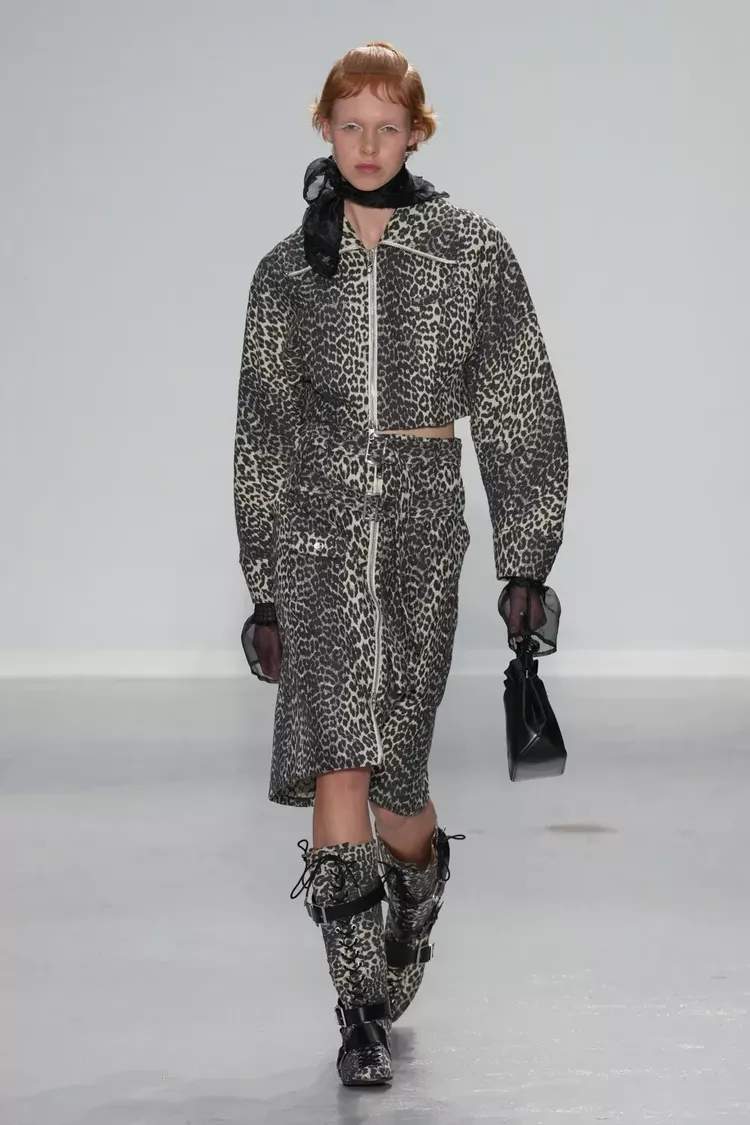
Ganni SS25.
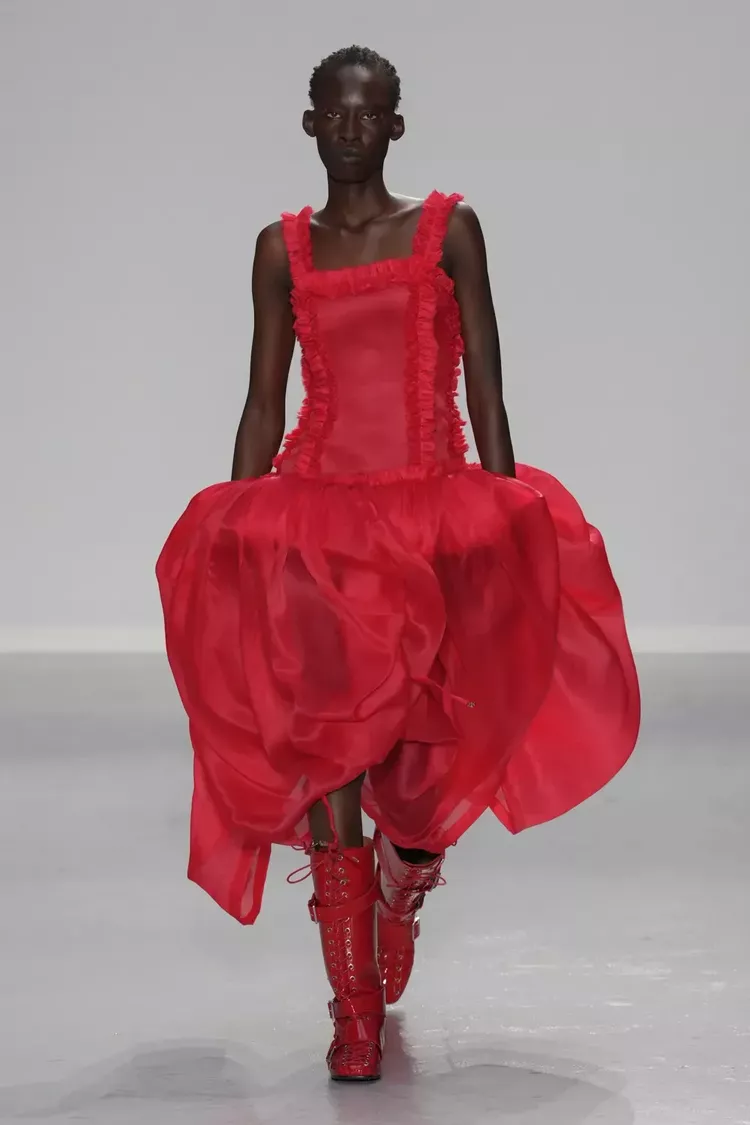
Ganni SS25.
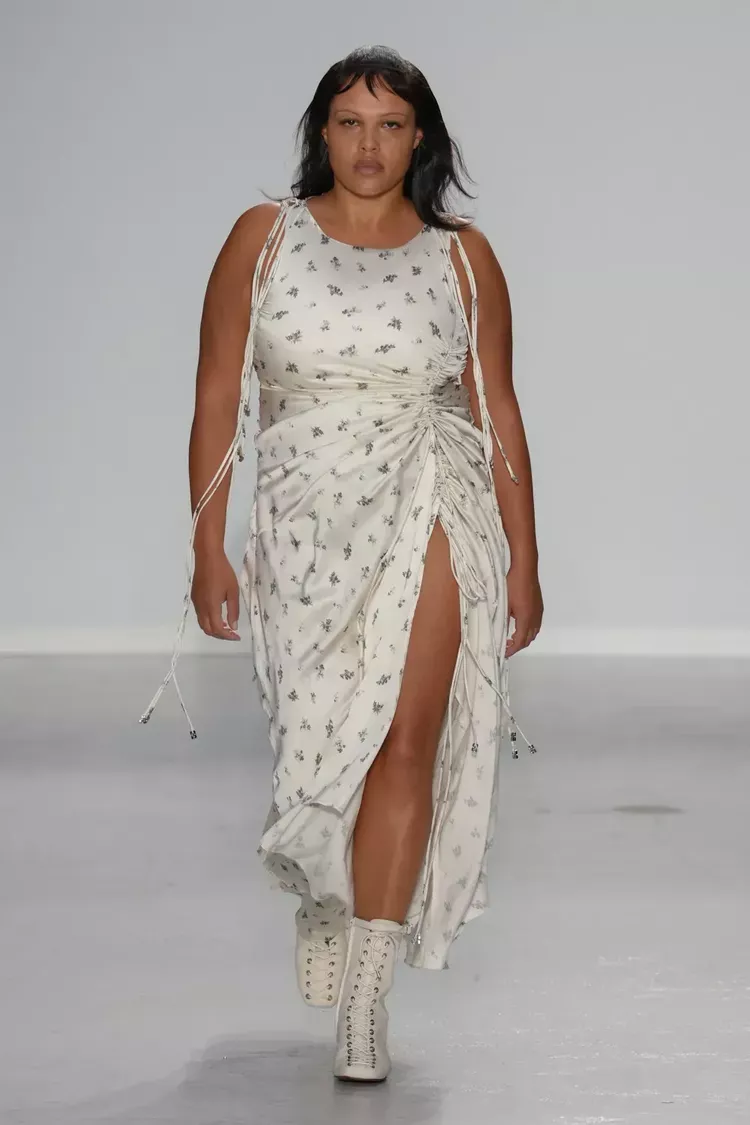
Ganni SS25.
With this new chapter comes a new, more grown-up direction. There’s a renewed focus on tailoring, classic staples given a Ganni twist, and a muted palette interjected with pops of colour. “It’s a little more mature; it’s an elevation of the brand,” shares the creative director. Even the prints have become more refined, although the label’s signature leopard spots remain, this time in grey.
Reffstrup is quick to emphasise that Ganni’s core values are the same, particularly when it comes to championing sustainability. Despite no longer showing in Copenhagen, the brand is still sticking to the fashion week’s 18 minimum sustainability requirements, while also staying committed to its own ambitious targets, including reducing its carbon emissions by 50 per cent by 2027.
In a bid to reduce its environmental footprint, Ganni no longer uses virgin leather in its collections, and has been promoting new, lower-impact materials via its Fabrics of the Future initiative. It’s why the spring/summer 2025 collection is called The Craft, in a nod to the craftsmanship needed to develop these pioneering technologies, as well as the degree of, in Reffstrup’s words, “witchery” involved (the show set featured a giant cauldron at the centre, in a nod to the theme).

Ganni SS25.
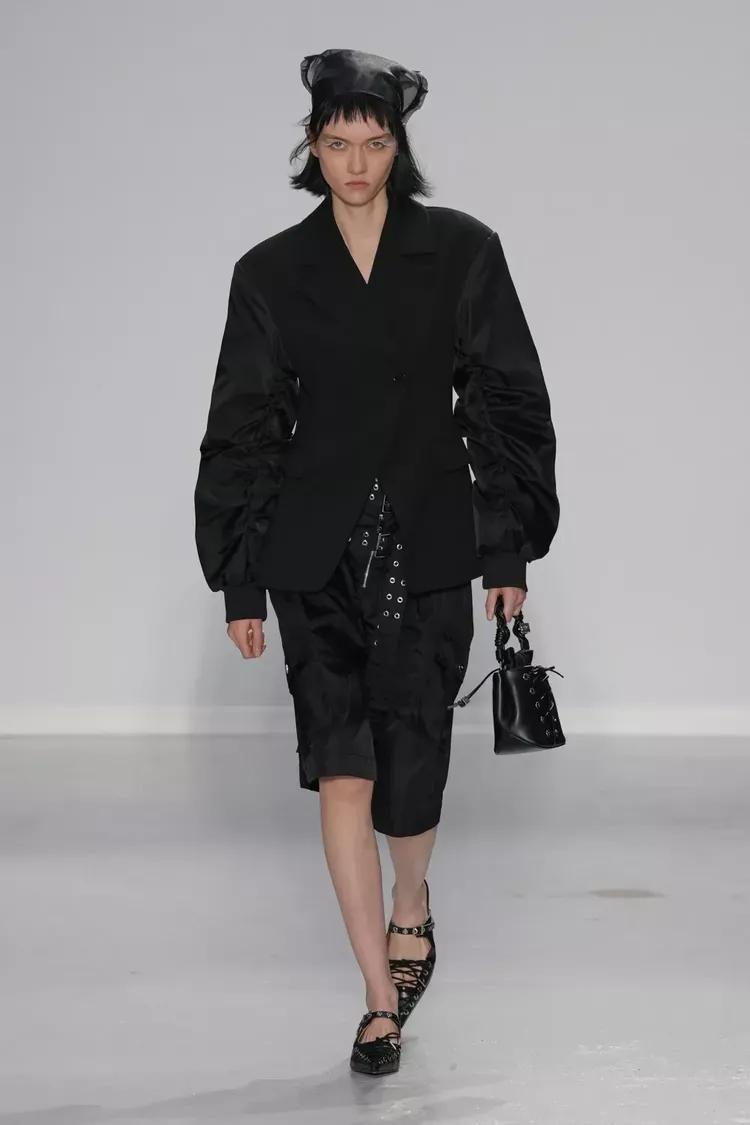
Ganni SS25.
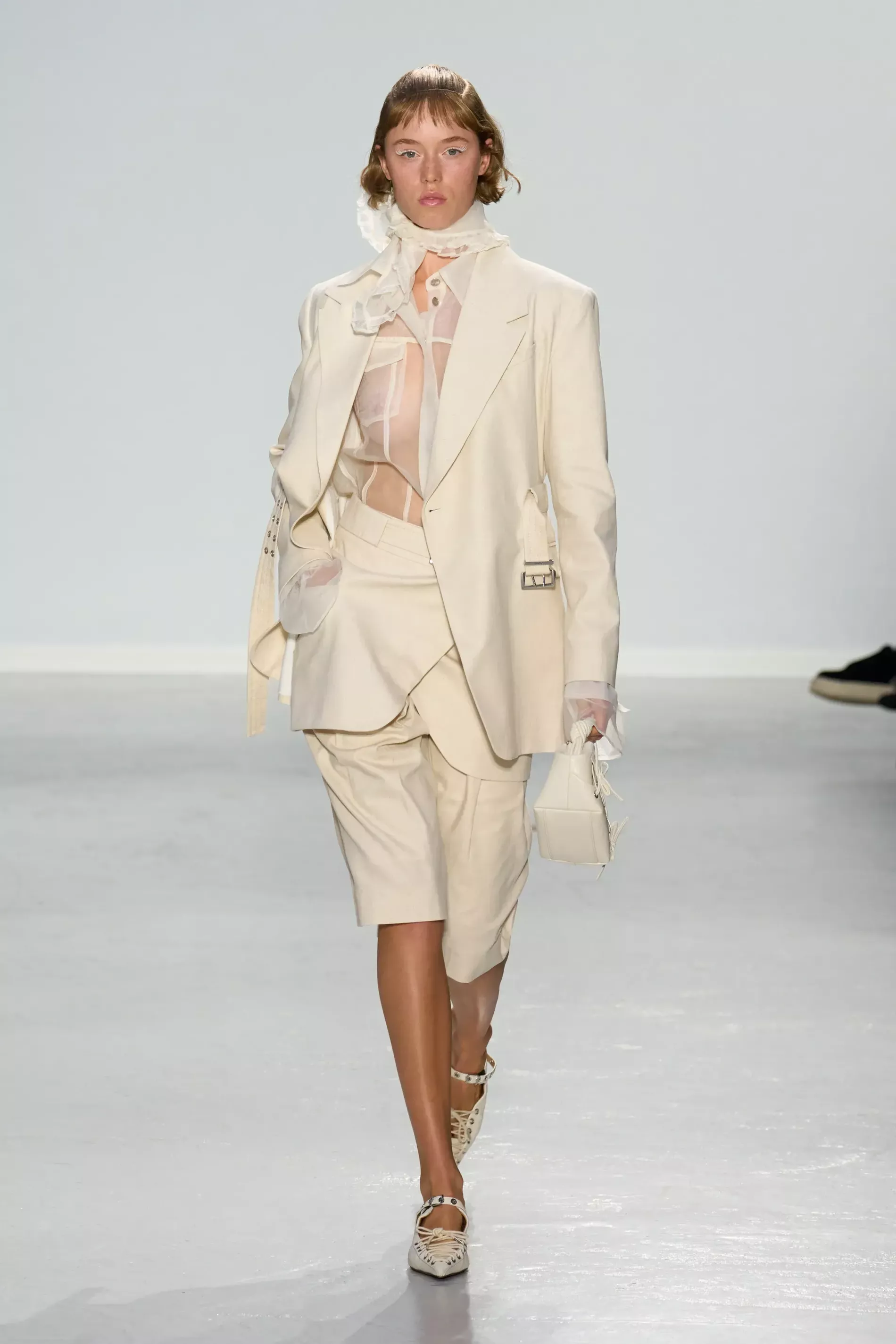
Ganni SS25.
“[It’s a] whole community that we have been trying to build up around the brand,” the designer explains, with many of the innovators the team has worked with being present at the show. There’s the denim containing Circulose, a fibre made from 100 per cent recycled textiles waste; the baby-blue blazer fashioned out of Celium, a bacteria-grown leather alternative; and the lace-up heels – an update on the popular ballerina flats – crafted from Oleatex, another faux leather made olive oil waste.
Now it wouldn’t be a Ganni show without a collaboration of some form: this season, the brand has partnered with two rising designers, Copenhagen’s Nicklas Skovgaard, who already counts Alexa Chung and Tracee Ellis Ross among his fans, and New York-based Claire Sullivan, who has created pieces for the likes of Sarah Jessica Parker and Chloë Sevigny. Both have put their own spin on Ganni’s signature pieces, with Skovgaard bringing his bubble-skirt silhouette to the brand’s collared dresses, while Sullivan has used new fabrication Cycora, recycled polyester textile waste, to create baseball-inspired designs.
While Ganni may have flown the nest, it’s clear that the brand’s effortless, yet inclusive, Scandi DNA still remains. After all, you can take the girl out of Copenhagen, but you can’t take the Copenhagen out of the girl. “As a human being you grow, you learn, [but] you’re still you; you’re how you’ve always been,” Reffstrup concludes. “The new Ganni is still Ganni – [that] will never change.”